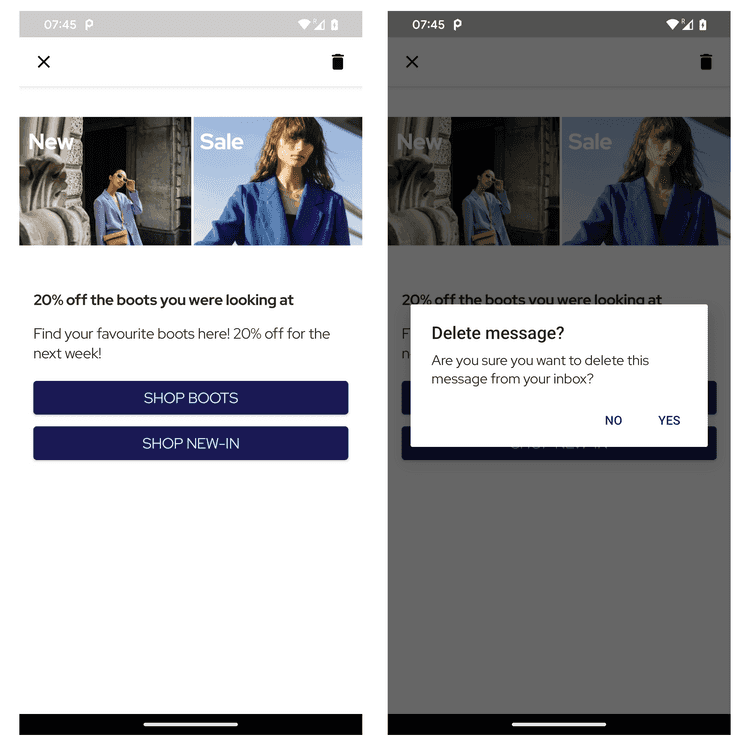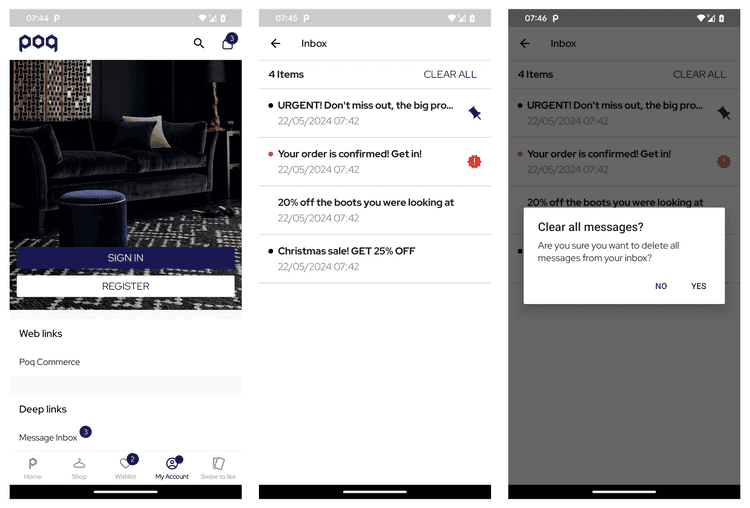Message Inbox
The Message Inbox is a base implementation for third party inbox providers to reach their audience with inbox messages.
Without any customisation, Message Inbox - List screen looks like this:
Without any customisation, Message Inbox - Message Details screens looks like this:

Start using the Message Inbox SDK
To start using it, you need to:
- Add the feature module to your
build.gradleimplementation ("com.poqstudio:notifications.inbox:$VERSION_NAME") - Include the specific third party Message Provider.
- Open the screen using
InboxActivity. Message Inbox screen acceptsmessageIdas a parameter, you can useInboxActivity.getStartIntentto get the appropriate Intent. - Include the
inboxcontent block in CMS.
The Message Inbox SDK is composed of these modules:
Koin modules
The Message Inbox SDK dependencies are injected using Koin. Message Ibox SDK provides the default dependencies definitions via these Koin modules:
Deep links
Message Inbox SDK provides two new deep links:
://inbox: it opensInboxActivitywithInboxFragmenton top.://inbox/message/{id}: it opensInboxActivitywithInboxMessageDetailFragmenton top.
Message Inbox Providers
The Message Inbox SDK does not contain a message provider it self, it rely on Third Party providers that will handle the messages storage and status.
Some platform integrations already include the Message Inbox Provider:
How to add a new message provider
To add a new message provider:
- Provide a custom provider implementation for the InboxMessageProvider interface.
- Provide a custom Koin module to inject the custom provider implementation:
import org.koin.dsl.moduleval customModule = module {factory<InboxMessageProvider> { CustomInboxMessageProvider() }}
